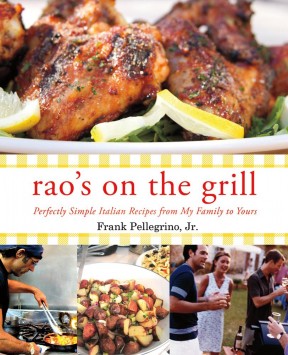Tom’s TableMy Favourite Everyday Recipes
A delicious new cookbook from Tom Kerridge featuring his favourite everyday recipes
Tom Kerridge is known for beautifully crafted food and big, bold flavours. Tom’s Table features 100 delicious everyday recipes so that anyone can achieve his Michelin-starred cooking at home. This is the sort of food you’ll cook again and again, whether you bring his hearty and delicious starter, side, main and dessert recipes to quick mid-week meals or weekend dinners. The recipes include Cheddar and ale soup, Simple sunflower-seed-crusted trout, the ultimate Roast chicken, Lamb ribs with roasted onions, Stuffed green peppers, Home-made ketchups, Popcorn bars, Date and banana milkshake, Pecan tart, and many more. With every recipe photographed by Cristian Barnett, this book is full of inspiring yet simple ideas from the man of the moment.
Tom Kerridge worked as a chef in restaurants across Britain before deciding to set out on his own and take over a rundown pub in the quiet town of Marlow. In 2005 he opened The Hand and Flowers with his wife Beth, and it went on to become the first pub in the world to acquire two Michelin stars. In 2014 he opened The Coach, his second pub in Marlow. He is the author of three books, Tom Kerridge’s Proper Pub Food, Tom Kerridge’s Best Ever Dishes and Tom’s Table. As well as hosting his own BBC television series, Tom has recently been at the helm of the BBC’s Food and Drink and Spring Kitchen series, and appears regularly on major broadcasts such as Saturday Kitchen, Great British Menu and MasterChef. Tom was also awarded Chef of the Year at the Food and Travel Awards 2015
CHEDDAR & ALE SOUP
POLLACK WITH ORANGE & DILL
FLOURLESS DARK CHOCOLATE CAKE ![]()
CHEDDAR & ALE SOUP
This is a super soup – ideal on its own with some bread for lunch, or as part of a bigger meal. I really like the combination of the rich, hoppy ale and the gentle acidity from the dairy. The chopped apple and malty dressing I use to garnish the soup cuts through the rich flavours and really makes them shine.
SERVES 4
75g butter
1 large onion (about 175g), diced
1 large potato (about 175g), peeled and diced
70g plain flour
500ml chicken stock
500ml brown ale (your choice, but the stronger the better)
100ml double cream
350g strong Cheddar cheese, grated
Salt and freshly ground black pepper
For the dressing
4 tbsp olive oil
1 tbsp malt extract
1 tbsp cider vinegar
To garnish
1 large Bramley apple, peeled, cored and finely diced
2 tbsp chopped chives
Melt the butter in a large, heavy-based saucepan over a medium heat. Add the onion and potato and cook gently, stirring from time to time, until softened (but don’t let them take on any colour), around 10–15 minutes.
Sprinkle the flour evenly over the vegetables in the pan and cook, stirring, for 1–2 minutes, then stir in the chicken stock. Whack up the heat and bring to the boil, then reduce to a simmer and cook gently for about 10 minutes until the soup has thickened. Pour in the ale and heat gently for a further few minutes.
Remove from the heat, let cool slightly and then transfer the mixture to a blender or food processor. Add the cream and whiz until nice and smooth.
Pass the soup through a fine sieve into a clean saucepan and season with pepper and a little salt – do not add too much at this stage as the cheese will introduce extra saltiness later.
To make the dressing, whisk together the olive oil, malt extract and cider vinegar in a small bowl until emulsified.
Warm the soup gently over a low heat and stir in the grated Cheddar, allowing it to melt. Taste and adjust the seasoning if necessary.
Ladle the soup into warmed bowls and trickle a little dressing on top of each one. Sprinkle on the diced apple and chives and serve immediately.![]()
POLLACK WITH ORANGE & DILL
The lovely, white flesh of pollack goes really well with a citrus dressing and the earthiness of the dill. I use a bit of Douglas fir in this dish, which might seem a bit ‘cheffy’ for everyday, but if you can get your hands on some, it’s a fantastic addition and goes brilliantly with the other ingredients. If you can’t, no worries. Just leave it out. I like to serve this with a simple potato salad.
SERVES 4
4 pollack fillets, about 250g each
Vegetable oil, for frying
Flaky sea salt
For the dressing
3 unwaxed oranges
100ml olive oil
150ml cider vinegar
75g caster sugar
A small bunch of dill, chopped, a few sprigs saved for the garnish
2 tbsp Douglas fir pine needles, chopped (optional)
For the coating
175g coarse yellow cornmeal
40g plain flour
1 tsp salt
1 tsp cayenne pepper
1 tsp garlic powder
For the garnish
1 orange, peeled, all pith removed and cut into segments
First make the dressing. Pare the zest from 2 oranges with a vegetable peeler, keeping a little of the pith on, and cut into small dice. Place in a small saucepan, cover with the olive oil and heat very gently over a low heat, for 20 minutes or until the skin is just soft. Take off the heat and leave to cool.
Squeeze the juice from all the oranges and put into a small pan with the cider vinegar and sugar. Bring to the boil, stirring to dissolve the sugar. Let it bubble to reduce by two-thirds until thickened and syrupy. Pour into a bowl and allow to cool.
Add the orange zest and olive oil mix to the orange juice reduction and whisk to combine. Stir in the chopped dill and pine needles if using, and set aside until ready to serve.
For the fish coating, mix all the ingredients together in a large bowl. Heat about a 2cm depth of oil in a deep-sided frying pan or sauté pan until it reaches 180°C. Use a frying thermometer to check the temperature, if you have one; otherwise drop a cube of dry white bread into the hot oil to test it – if the bread turns golden brown in just under a minute, the oil is ready.
Dust the fish fillets on both sides with the cornmeal coating, shaking off any excess. You may need to fry them in batches, depending on the size of your pan. Lay the fish in the pan and fry for 2–3 minutes on each side until the crust is crisp and golden brown. Using a fish slice, carefully transfer to a tray lined with kitchen paper to drain. Season lightly with salt.
Serve the pollack fillets on warmed plates, garnished with the orange segments and dill, with the dressing spooned over.![]()
FLOURLESS DARK CHOCOLATE CAKE
This is so simple, once you’ve made it, it will become your ‘go to’ chocolate cake every time you need a special treat. Cooked at a low temperature and left to set as it cools, it will then stay perfectly soft and moist in a tin for several days.
MAKES 8–10 SLICES
250g butter, diced, plus extra for greasing
375g dark chocolate (70% cocoa solids), broken into small pieces
7 eggs, plus 1 extra egg yolk
375g caster sugar
To serve
Whipped cream or crème fraîche
Raspberries, toasted nuts and/or grated chocolate (optional)
Preheat the oven to 140°C/Fan 120°C/Gas 1. Lightly grease a 23cm springform cake tin with butter and line the base and sides with non-stick baking parchment.
Put the butter and chocolate into a large, heatproof bowl and place over a saucepan of barely simmering water, making sure the bottom of the bowl is not touching the water. Allow to melt, then stir until smooth. Remove the bowl from the heat and cool slightly.
Using a freestanding mixer fitted with the whisk, or an electric hand mixer and bowl, whisk the eggs, egg yolk and sugar together until the mixture is light, fluffy and increased in volume. Carefully pour in the melted mixture and fold gently with a spatula to combine, trying not to knock out any air.
Pour the cake mixture into the prepared tin. Bake for about 40–45 minutes until set. It will soufflé up a little and a crust will form on the top. Remove from the oven and leave to cool in the tin – the cake will settle and sink down in the centre.
Once it’s cooled, press down and flatten the surface a little with a palette knife – this helps to give it a lovely, soft and gooey texture. Release the sides of the tin and peel away the parchment from the sides of the cake.
Invert a serving plate over the top of the cake and turn both over, to release the cake onto the plate. Remove the tin base and the baking parchment.
Either serve the cake just as it is, with cream or crème fraîche, or finish with any combination of whipped cream, raspberries, toasted nuts and grated chocolate.
Extract taken from Tom’s Table by Tom Kerridge (Absolute Press, $35, Hardback)
Photography (c) Cristian Barnett.











Leave a Reply